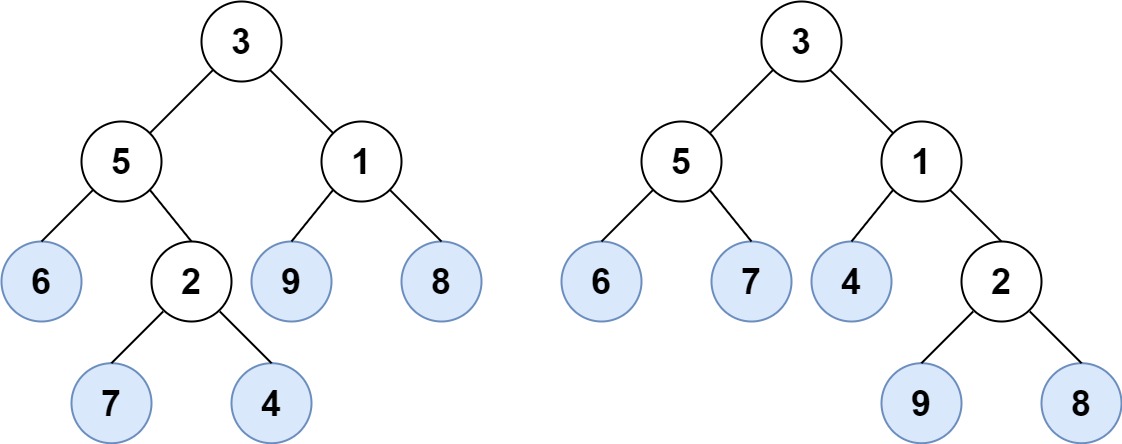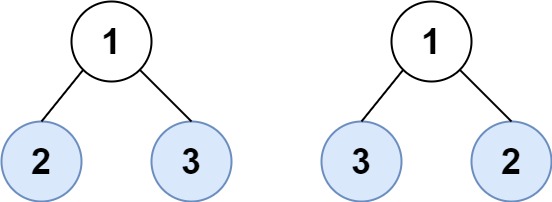LeetCode in Kotlin
872. Leaf-Similar Trees
Easy
Consider all the leaves of a binary tree, from left to right order, the values of those leaves form a leaf value sequence.

For example, in the given tree above, the leaf value sequence is (6, 7, 4, 9, 8).
Two binary trees are considered leaf-similar if their leaf value sequence is the same.
Return true if and only if the two given trees with head nodes root1 and root2 are leaf-similar.
Example 1:

Input: root1 = [3,5,1,6,2,9,8,null,null,7,4], root2 = [3,5,1,6,7,4,2,null,null,null,null,null,null,9,8]
Output: true
Example 2:

Input: root1 = [1,2,3], root2 = [1,3,2]
Output: false
Constraints:
- The number of nodes in each tree will be in the range
[1, 200]. - Both of the given trees will have values in the range
[0, 200].
Solution
import com_github_leetcode.TreeNode
/*
* Example:
* var ti = TreeNode(5)
* var v = ti.`val`
* Definition for a binary tree node.
* class TreeNode(var `val`: Int) {
* var left: TreeNode? = null
* var right: TreeNode? = null
* }
*/
class Solution {
fun leafSimilar(root1: TreeNode?, root2: TreeNode?): Boolean {
val list1: MutableList<Int> = ArrayList()
val list2: MutableList<Int> = ArrayList()
preOrder(root1, list1)
preOrder(root2, list2)
// compare the lists
if (list1.size != list2.size) {
return false
}
for (i in list1.indices) {
if (list1[i] != list2[i]) {
return false
}
}
return true
}
private fun preOrder(root: TreeNode?, list: MutableList<Int>) {
if (root != null) {
if (root.left == null && root.right == null) {
list.add(root.`val`)
}
preOrder(root.left, list)
preOrder(root.right, list)
}
}
}

